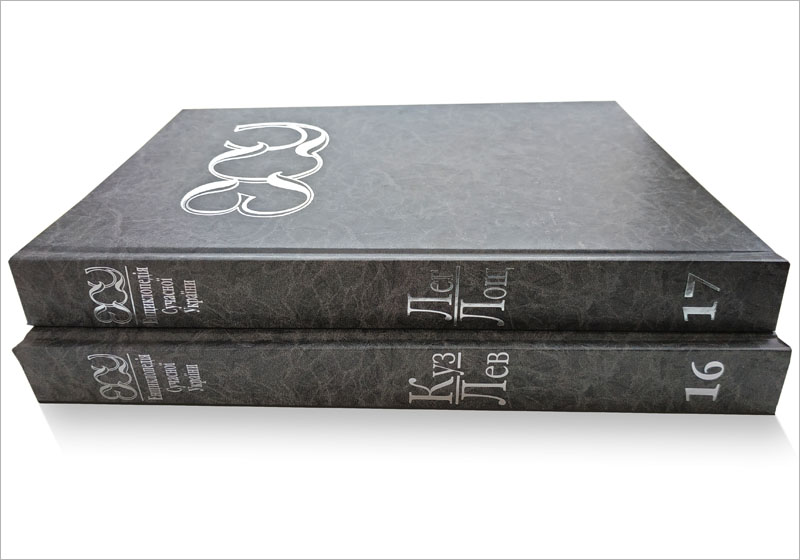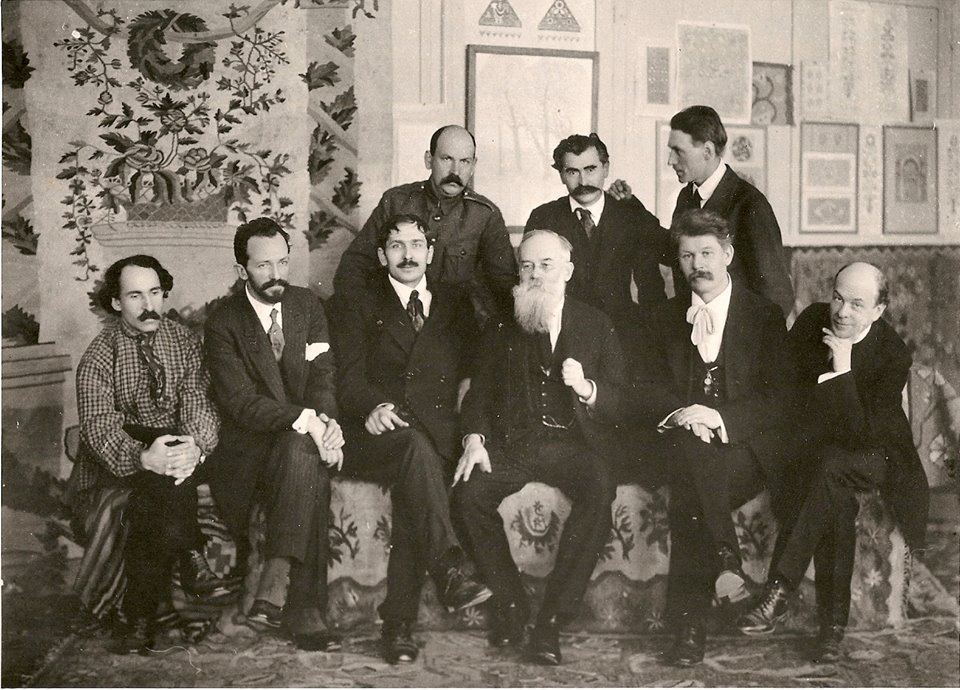|
Tymofiy Boychuk
Tymofiy Lvovich Boychuk, sometimes called Tymko (Ukrainian: Тимофій Львович Бойчук: 27 September 1896, Romanivka, now in Ternopil Raion — 13 July 1922, Kiev) was a Ukraine, Ukrainian painter. His older brother was the artist, Mykhailo Boychuk. Biography He was born to a peasant family. In 1914, his brother Mykhailo brought him to Kiev. Having displayed a talent for drawing at an early age, he was soon put to work as an assistant for Mykhailo who, since 1912, had been working with the Imperial Russian Archaeological Society to restore paintings and frescoes at in . As World War I progressed, the two brothers (who were officially Austrian citizens) were relocated to the northeast; first in Oral, Kazakhstan, Uralsk, then Arzamas. They were released at the beginning of the Russian Revolution of 1917, Revolution and allowed to return to Kiev. After the creation of the National Academy of Visual Arts and Architecture, Ukrainian State Academy of Arts, Mykhailo ... [...More Info...] [...Related Items...] OR: [Wikipedia] [Google] [Baidu] |
Tempera
Tempera (), also known as egg tempera, is a permanent, fast-drying painting medium consisting of colored pigments mixed with a water-soluble binder medium, usually glutinous material such as egg yolk. Tempera also refers to the paintings done in this medium. Tempera paintings are very long-lasting, and examples from the first century AD still exist. Egg tempera was a primary method of painting until after 1500 when it was superseded by oil painting. A paint consisting of pigment and binder commonly used in the United States as poster paint is also often referred to as "tempera paint", although the binders in this paint are different from traditional tempera paint. Etymology The term ''tempera'' is derived from the Italian ''dipingere a tempera'' ("paint in distemper"), from the Late Latin ''distemperare'' ("mix thoroughly"). History Tempera painting has been found on early Egyptian sarcophagus decorations. Many of the Fayum mummy portraits use tempera, sometimes in combina ... [...More Info...] [...Related Items...] OR: [Wikipedia] [Google] [Baidu] |
1896 Births
Events January–March * January 2 – The Jameson Raid comes to an end, as Jameson surrenders to the Boers. * January 4 – Utah is admitted as the 45th U.S. state. * January 5 – An Austrian newspaper reports that Wilhelm Röntgen has discovered a type of radiation (later known as X-rays). * January 6 – Cecil Rhodes is forced to resign as Prime Minister of the Cape of Good Hope, for his involvement in the Jameson Raid. * January 7 – American culinary expert Fannie Farmer publishes her first cookbook. * January 12 – H. L. Smith takes the first X-ray photograph. * January 17 – Fourth Anglo-Ashanti War: British redcoats enter the Ashanti capital, Kumasi, and Asantehene Agyeman Prempeh I is deposed. * January 18 – The X-ray machine is exhibited for the first time. * January 28 – Walter Arnold, of East Peckham, Kent, England, is fined 1 shilling for speeding at (exceeding the contemporary speed limit of , the first spee ... [...More Info...] [...Related Items...] OR: [Wikipedia] [Google] [Baidu] |
National Parliamentary Library Of Ukraine
The Yaroslav Mudryi National Library of Ukraine ( uk, Національна бібліотека України імені Ярослава Мудрого, translit.: ''Yaroslav Mudryi National Library of Ukraine'') is one of the national libraries of Ukraine, one of the largest libraries of the country. It was opened in 1866 as the city's public library. The main building of the library is located on ''1, Mykhaila Hrushevskoho Street'' on the European Square in the center of Kyiv. It is the central library of Ukraine's public library system and is a research institute bibliography and library science.McDonald, J.D., & Levine-Clark, M. (Eds.). (2018). Encyclopedia of Library and Information Sciences (4th ed.). CRC Press. https://doi-org.ezproxy.lib.usf.edu/10.1081/E-ELIS4 History The library's building itself was built in 1911, by the architects Z. Kliave and A. Krivosheyev. The library itself was first founded in 1866. During the library's 140 years of existence, it has obtain ... [...More Info...] [...Related Items...] OR: [Wikipedia] [Google] [Baidu] |
Encyclopedia Of Modern Ukraine
Encyclopedia of Modern Ukraine ( uk, Енциклопедія Сучасної України (ЕСУ), translit=Entsyklopediia Suchasnoi Ukrainy (ESU)), abbreviated EMU, is a multi-Volume (bibliography), volume national encyclopedia of Ukraine. It is an academic project of the Institute of Encyclopaedic Research of the National Academy of Sciences of Ukraine. Today, the reference work is available in a print edition and online. The ''EMU'' provides an integral image of modern Ukraine describing events, institutions, organizations, activities, notions and people from the early 20th century to the present. It embraces all spheres of life in Ukraine, and reflects current views on historical events and personalities. Paper edition A first edition has been in progress. 30 volumes are planned — by 2022 24 volumes had been published and it has already become the most comprehensive paper encyclopedia on Ukraine to date. Published volumes are co-edited by Ivan Dziuba, Arkadii Zhukov ... [...More Info...] [...Related Items...] OR: [Wikipedia] [Google] [Baidu] |
Great Purge
The Great Purge or the Great Terror (russian: Большой террор), also known as the Year of '37 (russian: 37-й год, translit=Tridtsat sedmoi god, label=none) and the Yezhovshchina ('period of Nikolay Yezhov, Yezhov'), was General Secretary of the Communist Party of the Soviet Union, Soviet General Secretary Joseph Stalin's campaign to solidify his power over the party and the state; the Purge, purges were also designed to remove the remaining influence of Leon Trotsky as well as other prominent political rivals within the party. It occurred from August 1936 to March 1938. Following the Death and state funeral of Vladimir Lenin, death of Vladimir Lenin in 1924 a power vacuum opened in the Communist Party of the Soviet Union, Communist Party. Various established figures in Lenin's government attempted to succeed him. Joseph Stalin, the party's General Secretary, outmaneuvered political opponents and ultimately gained control of the Communist Party by 1928. Initially ... [...More Info...] [...Related Items...] OR: [Wikipedia] [Google] [Baidu] |
Boychukism
Boychukism (in Ukrainian : ) is a cultural and artistic phenomenon in the history of Ukrainian art between the 1910s and 1930s, distinguished by its artistic monumental-synthetic style. It was an original school of Ukrainian art, formed by a synthesis of Ukrainian folk art and the church art of Byzantium, Proto-Renaissance and Ukraine. The name comes from the name of the founder of the movement: Mykhailo Boychuk, monumentalist and graphic artist. Neo-Byzantine art European artists of that time such as Pablo Picasso, Alexander Arkhipenko and Kazimir Malevich, differently understood the connections between the spiritual nature of ancient cultures and the language of its plasticity. Byzantinism and the Ukrainian naïve art became artistic landmarks for the Boychukists. In 1909, Boychuk founded a studio of Neo-Byzantine art in Paris, which became the beginning of his school. The artist sought to revive Ukrainian art on the basis of the best achievements of Byzantium and Kievan Ru ... [...More Info...] [...Related Items...] OR: [Wikipedia] [Google] [Baidu] |
National Opera Of Ukraine
The Kyiv Opera group was formally established in the summer of 1867, and is the third oldest in Ukraine, after Odessa Opera and Lviv Opera. The Kyiv Opera Company perform at the National Opera House of Ukraine named after Taras Shevchenko in Kyiv. The opera in 2 acts, '' Natalka Poltavka'', was the last scheduled performance before the 2022 Russian invasion of Ukraine. History Early history: 1867 - 20th century Established in the summer of 1867 by Ferdinand Berger (? - 1875). Berger succeeded in inviting many talented singers, musicians, and conductors, and the city council (duma) had offered the newly created troupe to use the City Theatre (constructed in 1856, architect I. Shtrom) for their performances. Officially, the theatre was named the City Theatre but was most commonly referred to as the Russian Opera. The day of the first performance, November 8 (October 27 old style), 1867 was made a city holiday. The performance of the opera '' Askold's Tomb'' by Alexey Vers ... [...More Info...] [...Related Items...] OR: [Wikipedia] [Google] [Baidu] |
Icon Painting
An icon () is a religious work of art, most commonly a painting, in the cultures of the Eastern Orthodox, Oriental Orthodox, and Catholic churches. They are not simply artworks; "an icon is a sacred image used in religious devotion". The most common subjects include Christ, Mary, saints and angels. Although especially associated with portrait-style images concentrating on one or two main figures, the term also covers most religious images in a variety of artistic media produced by Eastern Christianity, including narrative scenes, usually from the Bible or the lives of saints. Icons are most commonly painted on wood panels with egg tempera, but they may also be cast in metal, carved in stone, embroidered on cloth, done in mosaic or fresco work, printed on paper or metal, etc. Comparable images from Western Christianity can be classified as "icons", although "iconic" may also be used to describe a static style of devotional image. In the Greek language, the term for icon painti ... [...More Info...] [...Related Items...] OR: [Wikipedia] [Google] [Baidu] |
Byzantine Art
Byzantine art comprises the body of Christian Greek artistic products of the Eastern Roman Empire, as well as the nations and states that inherited culturally from the empire. Though the empire itself emerged from the decline of Rome and lasted until the Fall of Constantinople in 1453, the start date of the Byzantine period is rather clearer in art history than in political history, if still imprecise. Many Eastern Orthodox states in Eastern Europe, as well as to some degree the Islamic states of the eastern Mediterranean, preserved many aspects of the empire's culture and art for centuries afterward. A number of contemporary states with the Byzantine Empire were culturally influenced by it without actually being part of it (the "Byzantine commonwealth"). These included the Rus, as well as some non-Orthodox states like the Republic of Venice, which separated from the Byzantine Empire in the 10th century, and the Kingdom of Sicily, which had close ties to the Byzantine Empire a ... [...More Info...] [...Related Items...] OR: [Wikipedia] [Google] [Baidu] |
National Academy Of Visual Arts And Architecture
The National Academy of Visual Arts and Architecture ( uk, Націона́льна акаде́мія образотво́рчого мисте́цтва і архітекту́ри; НАОМА) - is an art university in Kyiv, Ukraine specialising in visual arts and architecture. It has departaments of painting, sculpture, illustration, graphic design, stage design, architecture, Art conservation, art management. Name * 1917-1922 Ukrainian State Academy of Arts * 1922-1924 Institute of Plastic Arts * 1924-1930 Kyiv Art Institute (joined with the Ukrainian Institute of Architecture, 1918–1924) * 1930-1934 Kyiv Institute of Proletarian Art Culture * 1934-1992 All-Ukrainian Art Institute * 1992-1998 Ukrainian Academy of Arts :''In 1996 in Kyiv was established Academy of Arts of Ukraine (AMU) as a learned society or national academy specialising in various type arts (i.e. visual, music, theatric, etc.).'' * 1998-2000 Academy of Visual Arts and Architecture * 2000–present Nati ... [...More Info...] [...Related Items...] OR: [Wikipedia] [Google] [Baidu] |
Ternopil Raion
Ternopil Raion ( uk, Тернопільський район) is a raion in Ternopil Oblast in western Ukraine. Its administrative center is Ternopil. It has a population of On 18 July 2020, as part of the administrative reform of Ukraine, the number of raions of Ternopil Oblast was reduced to three, and the area of Ternopil Raion was significantly expanded. Six abolished raions, Berezhany, Kozova, Pidhaitsi, Pidvolochysk, Terebovlia, and Zboriv Raions, a part of one more abolished raion, Zbarazh Raion, as well as Berezhany Municipality and the city of Ternopil, which was previously incorporated as a city of oblast significance and did not belong to the raion, were merged into Ternopil Raion. The January 2020 estimate of the raion population was Subdivisions Current After the reform in July 2020, the raion consisted of 25 hromadas: * Baikivtsi rural hromada with the administration in the selo of Baikivtsi, retained from Ternopil Raion; * Bila rural hromada with the adminis ... [...More Info...] [...Related Items...] OR: [Wikipedia] [Google] [Baidu] |


.jpg)






